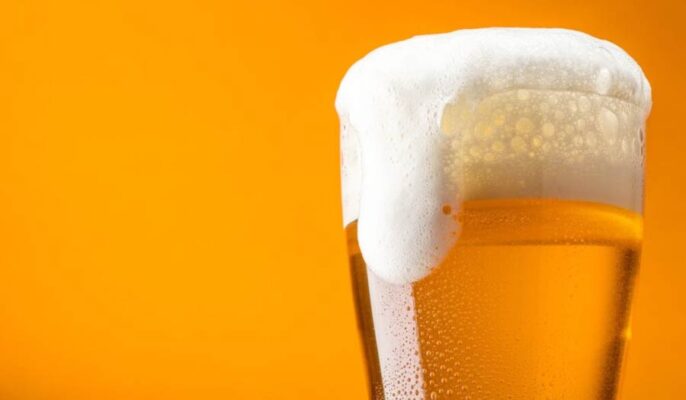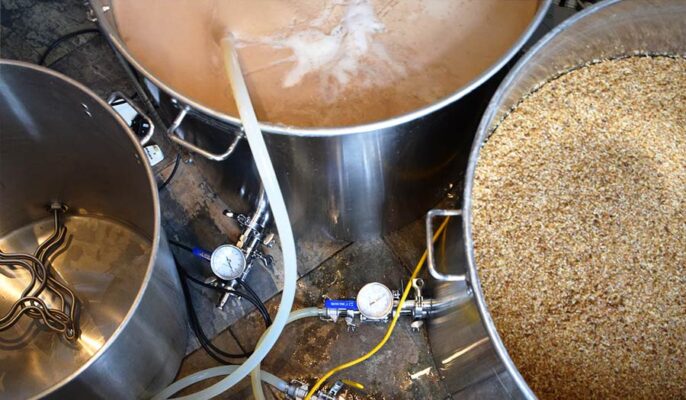Bright beers are favored by beer drinkers, but clarified beers can be elusive to brewers. Commercial breweries use clarifiers, filtration, and pasteurization techniques to keep beer crystal clear. While filtration is sometimes used by advanced winemakers, simpler techniques can help improve clarity. Using a few simple tips, it should not be difficult for a home brewer to achieve the clarity of a commercial beer.
What is clarified beer?
The name of any process for removing solids from wort or beer to get a clear liquid. Wort clarification is important because beer produced with clarified wort tends to be of higher quality. After the wort has been boiled in wort pots or copper pots, it is clarified in the brewery. If hop extract or pellets are used, a “swirl” may be involved. If whole-leaf hops are used, “kickback” may be involved. Unclarified wort may ferment , and the resulting beer may be difficult to filter, or may be difficult to clarify in casks using clarifiers.

Causes of Cloudy Beer Formation
Bioparticles
Brewer’s yeast that was put in as well as any wild yeast and bacteria that may have found your beer. These can form a permanent haze or a temperature-dependent haze, and they can affect flavor and aroma. Bacteria and wild yeast are the result of poor hygiene practices.
Non-biological particles
Includes particulate matter, protein polyphenol complex, carbohydrates such as starch, and calcium oxalate. These create temporary hazes that are temperature dependent. Among the largest contributors are protein-polyphenol complexes.
Reactant
Another way to break down the source of beer haze is through particles and reaction accelerators.
Protein: from malt
Polyphenols: Both flavonoids and tannins are polyphenols. But only the larger tannins form the haze.
Other particulate matter: from yeast, malt and auxiliary carbohydrates, and bacteria.
Coordinator
Oxygen: Catalyst for the binding of flavonoids, which produce tannins.
Heating: Accelerates polyphenol reactions, but they only become visible after cooling.
Light: Thought to speed up polyphenol reactions.
Time: The longer the beer is stored, the longer it will take for the reaction to occur.
Transition metal ions (copper, iron): Found in old brewing equipment and even filter elements, copper and iron are catalysts that can shuttle between oxidation states, providing oxygen to the polyphenols, speeding up the reaction.
Choose grains that are lower in protein
Protein can enhance the body of beer, but it will damage the clarity of beer. Keep high-protein adjuncts like wheat, barley flakes, and dark malts for wheat and stout, as transparency is not an important consideration. If you are brewing a pale beer where clarity is important, choose a two column pale malt or pale malt extract base and add only enough high protein dark malt to get the desired color and body.
Rapid cooling of wort with a wort cooler
A wort cooler is the best way to cool your beer as as possible. When you bring wort from a boil to below 80°F , most of the unwanted material (tannins and proteins) tends to clump and fall to the bottom of the brew tank. When those tannins and proteins don’t even make it into your fermentation tank, your beer will definitely be clearer. you want to cool the boiling wort to coagulation temperature in 15 minutes or less. Any wort cooler sold in the Midwest will do this; the cooler you choose will depend on your skill level and brew settings.

Choose high flocculation yeast
Flocculation is defined as the rate at which a particular yeast strain is shed from the beer after fermentation is complete. If you choose a yeast strain with a high flocculation rate, it will clear much faster than a yeast strain with a low flocculation rate. Flocculation shouldn’t be your only consideration, but if you have a choice, choose a yeast strain that both matches your beer style and has moderate to high flocculation.
Add clarifying agent
A variety of fining agents can be added to the finished beer to help clarify the beer . These agents work by attaching themselves to the yeast, tannins and proteins, helping them settle to the bottom of the fermenter or bottle more . One available ingredient is clear gelatin from the grocery store. Dissolve it in a few cups of warm sterile water and add it to the secondary fermenter a few days before bottling.
Store beer
Storing beer is storing beer in a refrigerated environment (at 33-35°F). If you have the means to do it, it’s the easiest and most effective way to clear your beer. At lower temperatures, it is more difficult for these tannins, proteins and yeast to remain in suspension. Stored beer clarifies much faster than beer stored at room temperature. It should be noted that for bottling or carbonating kegs, it is necessary to wait for the beer to be carbonated before storage. Otherwise, the yeast may be slowed or killed, resulting in a carbonated beer.
Summarize
Beer fining may involve different processes. Excess yeast and protein are removed from the beer in the brewery. The beer is easier to filter by removing excess solids before final filtration. In traditional keg-aged beers, fining agents such as isinglass are used to precipitate yeast and protein during clarification that takes place in the keg. Hope this article can help you!




